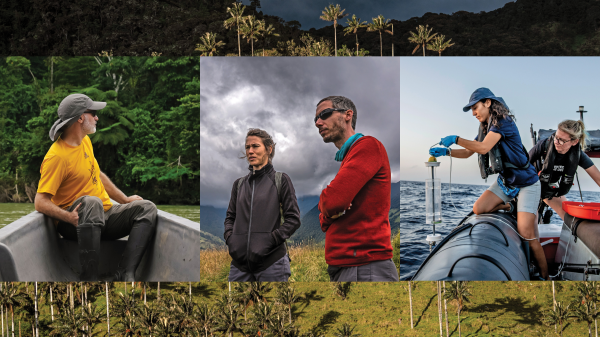ASU geography course takes students on journey through 'worlds'— real and imagined

Photo courtesy of Depositphotos.com
At a time in society when travel is limited, books and movies, more than ever, offer an escape from the present and the opportunity to be transported to distant places both fantastical and foreign.
But how does imaginative storytelling bring new ‘worlds’ to life? And how do artful dimensions of geography transform our understanding of self, place and culture in the modern world?
One Arizona State University professor aims to tackle these questions in an iCourse titled Journey Stories: People & Place in Motion. The class brings together geographical concepts and storytelling through literature and film to explore the human experience and human condition in different places and times.
Kevin McHugh, a cultural geographer and associate professor in the School of Geographical Sciences and Urban Planning, created the course with the aim of facilitating the development students’ skills in critical and creative thinking through writing.
“Geography is not only about facts and figures, it’s a storied affair. Geography can be traced to its Greek roots meaning ‘earth writing,’” McHugh said. “Reading, narrating, and interpreting stories in literature and film with special attunements for movement, place and landscape is a deeply geographical skill that opens up new ways of imagining more just and sustainable worlds.”
Drawing on fiction, nonfiction, short stories, essays and film, the class examines stories and storytelling through the lens of cultural geography themes of movement, place and landscape.
The class is organized around six diverse journey stories representing different genres in fiction and nonfiction from probing colonialism in the Belgian Congo in “Heart of Darkness,” to a deadly journey story of crossing the inhospitable Arizona-Sonora borderlands with Mexican migrants in the “Devil’s Highway,” to the resolve of a lone old man journeying across America’s heartland on a John Deere lawnmower tractor to visit his stricken brother, in the film, “The Straight Story.” McHugh says each story was chosen to inspire students in different ways.
While there isn’t a sole piece of literature that McHugh says spurred the creation of the course in its current form, if he had to choose one, he says, it would be the novel “Invisible Cities” by Italo Calvino, a fantastical tale which details a magical journey through 55 imaginary cities.
“Calvino’s book, a staggering feat of the imagination, stirs imaginative and visionary thinking in students,” McHugh, a self-proclaimed bibliophile, said. “Exposing students to amazing writers like Italo Calvino is a prime motivation for creating and teaching Journey Stories.”
“As a geographer, my fondest wish is that students get turned on to the potency of storytelling about worlds real and imagined, actual and virtual.”
McHugh says that Journey Stories was created in a way to encourage a wide range of self-expression. In the class students respond to artful journey stories through writing critical-creative essays.
“I am a huge proponent of creative geographies,” McHugh said. “In my view, instructors need to do all we can in encouraging creative self-expression among students.”
Journey Stories: People & Place in Motion is one of a series of courses offered by ASU that examine geography in unique ways. Visit the School of Geographical Sciences and Urban Planning YouTube page to watch class preview videos from faculty and learn more about spring 2021 offerings.
More Environment and sustainability

A water fix that takes on the yuck factor
Written by Christy Spackman, an ASU assistant professor and senior global futures scientist. This essay is adapted with…

At home in the wild
By Kristin ToussaintEditor's note: This story is featured in the winter 2025 issue of ASU Thrive.Way up in the Andes mountains in…

Switching to 'green' plastic alone won’t solve the plastic problem, study shows
Plastic is everywhere. Today alone, you have probably already touched a whole lot of it, whether it’s your phone case, sunglasses…